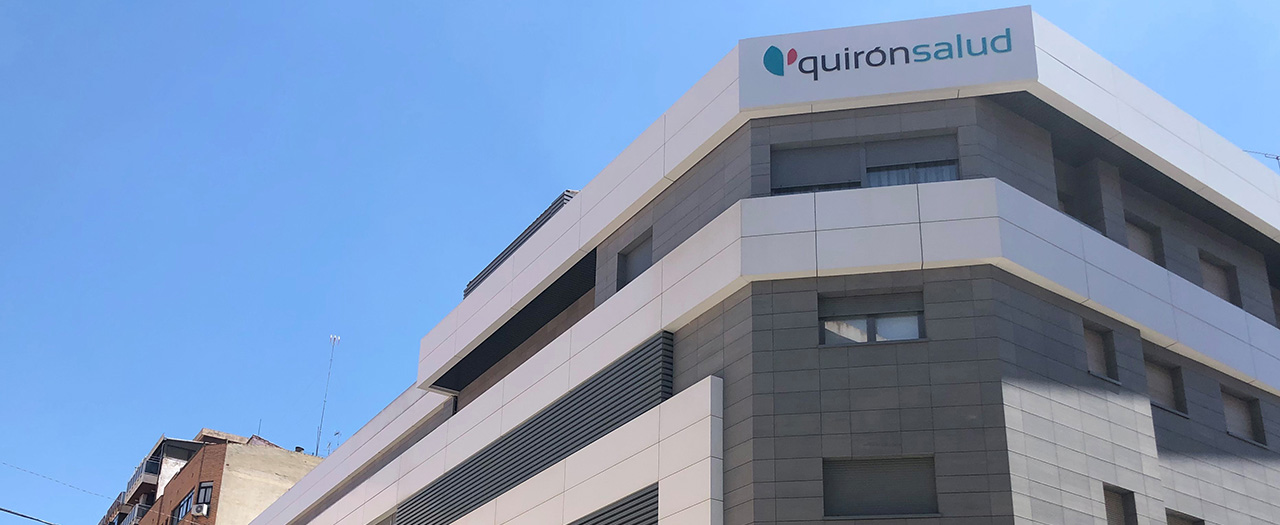Psoriatic Arthritis
Is psoriatic arthritis a serious disease? All the information about this disorder and its prognosis.
Symptoms and Causes
Psoriatic arthritis, or rheumatoid psoriasis, is a disease characterized by inflammation of the joints and is associated with psoriasis, a skin inflammatory disorder that presents with reddish, scaly outbreaks.
Generally, arthritis appears years after psoriasis manifests, though it can also occur at the same time or even before. Psoriatic arthritis is part of spondyloarthropathies, a group of rheumatic diseases that share clinical, genetic, and radiological characteristics. Both psoriatic arthritis and psoriasis are chronic, autoimmune, and incurable diseases that alternate symptomatic outbreaks with periods of remission.
Depending on the areas of the body where it manifests, there are three types of psoriatic arthritis:
- Axial psoriatic arthritis: affects the spine. It is the least common type.
- Peripheral psoriatic arthritis: manifests in the peripheral joints, mainly the hands and feet.
- Mixed psoriatic arthritis: combines the two previous forms.
Additionally, arthritis can be oligoarticular, affecting a maximum of four joints, or polyarticular, affecting more than four joints.
Symptoms
Psoriatic arthritis shares symptoms with rheumatoid arthritis, although it does not present the characteristic antibodies of the latter. Common symptoms include:
- Psoriatic eruptions: patches of reddish, scaly, inflamed skin often appear on the scalp, elbows, and knees. In rare cases, psoriatic arthritis can present without skin symptoms.
- Inflammation, pain, and heat in the joints, mainly in the distal joints of the fingers and toes, although it can also affect the hips, knees, and spine. It usually appears asymmetrically, meaning it affects one side of the body more than the other, though it can also appear symmetrically.
- Dactylitis or "sausage-shaped fingers": swelling of the entire finger due to inflammation of the tendon sheaths of the flexor muscles.
- Enthesitis: painful inflammation of the tendons or ligaments at the site where they attach to the bone around the joints. It primarily affects the Achilles tendon and the sole of the foot.
- Lower back pain: axial psoriatic arthritis causes inflammation of the joints between the vertebrae in the spine.
- Stiffness in the hands.
- Nail lesions: nails may present small pits, break, or detach from the nail bed.
- Conjunctivitis or uveitis: inflammation of the membrane between the eyelid and eyeball or of the layer between the retina and the sclera, respectively. The latter can lead to permanent vision loss.
Causes
Psoriatic arthritis is an autoimmune disease that occurs because the immune system mistakenly attacks healthy cells in the body, causing joint inflammation and other symptoms. The ultimate cause of this immune response is unknown, but it is believed to result from a combination of several factors:
- Genetic factors: Spondyloarthropathies are associated with the HLA B27 gene, although it does not appear in all cases.
- Environmental factors: A viral or bacterial infection, trauma, obesity, or stress are believed to trigger psoriatic arthritis in genetically predisposed individuals.
Risk Factors
The likelihood of developing psoriatic arthritis increases in the following cases:
- Presence of psoriasis: approximately 30% of patients with psoriasis develop arthritis.
- Family history.
- Age: it is more frequently manifested between the ages of 30 and 35.
- History of infections such as HIV, streptococcal pharyngitis, or upper respiratory tract infections.
Complications
In some cases, arthritis is accompanied by destruction of the bones and joints in the fingers and toes (mutilating arthritis), leading to deformities and potentially permanent disability. Additionally, psoriatic arthritis is a risk factor for other diseases, such as hypertension, metabolic syndrome, diabetes, and cardiovascular diseases.
Prevention
Since it is an autoimmune disorder with an unknown cause, it is not possible to effectively prevent psoriatic arthritis. However, it is possible to address the environmental factors that often trigger it to delay its onset or mitigate its symptoms:
- Avoid smoking and alcohol.
- Maintain a healthy weight.
- Try to reduce stress.
- Rest and sleep sufficiently.
- Protect against infections through vaccinations and hygiene measures.
What doctor treats psoriatic arthritis?
Psoriatic arthritis is diagnosed and treated in the rheumatology department.
Diagnosis
Confirming psoriatic arthritis can be complicated, as there is no specific test for the disease, and skin and joint symptoms do not always coexist. Diagnosis is based on the following:
- Physical examination: characteristic manifestations of the disease, such as inflammation of the distal joints in the fingers and deformities, are key for diagnosis, especially if there is a family and personal history of psoriasis.
- Blood tests may help rule out other diseases. An increase in inflammatory markers (sedimentation rate, C-reactive protein, etc.), moderate anemia, and elevated uric acid can be observed.
- Synovial fluid analysis: fluid is extracted from one of the affected joints using a needle. The presence of uric acid crystals indicates gout rather than arthritis (though it is possible to have both conditions at the same time).
- X-rays: ultrasound images allow for evaluation of joint deformities and damage.
- MRI: this test takes detailed images of soft tissues using radio waves and magnetic fields, which is useful for studying the condition of tendons and ligaments.
Treatment
There is no cure for psoriatic arthritis, so treatment focuses on controlling flare-ups and relieving symptoms. Common options include:
- Pharmacological treatment:
- Non-steroidal anti-inflammatory drugs (NSAIDs): reduce inflammation and alleviate joint pain in mild cases of arthritis.
- Biological agents: drugs made from living organisms, mainly antibodies, that act on the immune system.
- Tumor necrosis factor inhibitors (anti-TNF): monoclonal antibodies that limit the activity of the protein that promotes inflammation and fever in the body's immune response.
- Interleukin inhibitors: block the activity of proteins produced by leukocytes that participate in the body’s inflammatory response.
- T-cell inhibitors: act against immune cells that mediate cellular immune responses.
- Disease-modifying anti-rheumatic drugs (DMARDs): these medications, such as methotrexate or sulfasalazine, act against the immune system, delaying the progression of arthritis. They can have side effects such as liver damage, lung infection, or bone marrow suppression.
- Synthetic disease-modifying anti-rheumatic drugs with specific targets (sDMARDs): these drugs, such as apremilast, modify the inflammatory cells' response. They are used as alternatives when other treatments are not an option or have not been effective.
- Steroid injections: injected directly into the affected joints to reduce inflammation.
- Rehabilitation therapy: physiotherapy and moderate low-impact exercise can help alleviate pain and improve quality of life.
- Treatment for psoriatic skin lesions: reduces rashes and relieves itching.
- Topical treatment: creams, gels, or oils that may contain various substances such as steroids, vitamin D analogs, salicylic acid, anthralin, retinoids, or calcineurin inhibitors.
- Phototherapy: controlled exposure to natural or artificial light.
- Surgical treatments:
- Prosthetic surgery: in advanced cases, the affected joint may be replaced with an artificial prosthesis. This is usually done for the hip and knee.
- Synovectomy: if tendon rupture or chronic joint inflammation does not resolve with standard treatments, the synovial membrane, located inside the capsule surrounding the joint, can be removed. This technique is only applied in exceptional cases.

















































































